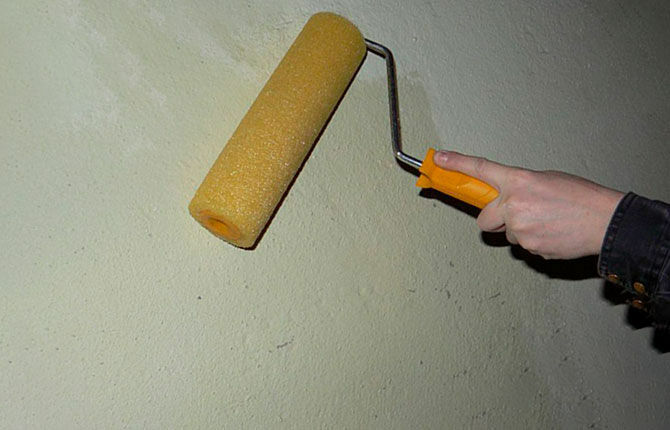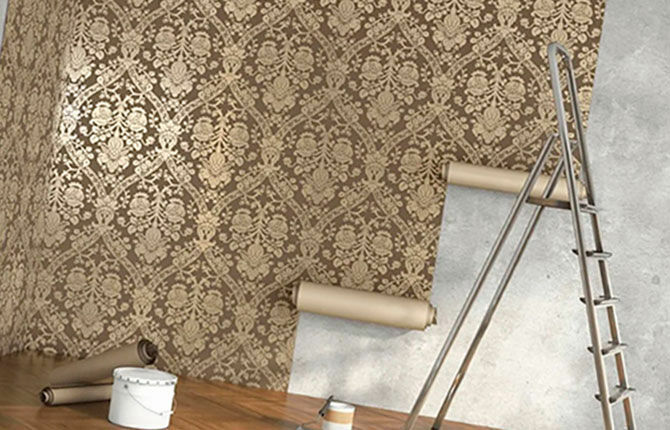The partition divides the space into separate rooms or zones. The comfort and convenience of family members living in the house depends on its ability to absorb noise, preventing sound propagation further. Having completed the appropriate soundproofing of the partitions, you can calmly go about your business, without disturbing loved ones in the neighboring rooms.
The content of the article:
- Types of partitions
-
Soundproofing materials
- Giprok
- Izoplat
- Cotton insulation
- Isotex
-
Soundproofing a single-layer partition
- Option 1 - isotex
- Option 2 - isoplat and isotex
-
Soundproofing a multi-layer partition
- Contiguity
- Plate, isoplat and gypsum plasterboard
- Giprok, isoplat and insulation
Types of partitions
By design, partitions are divided into two classes:
- Single layer. They can be made from different materials - brick, expanded clay concrete, reinforced concrete, gypsum. They are always based on a dense building material and a rigid binder - a solution. The sound absorption of such a structure is the better, the greater the mass of the wall.
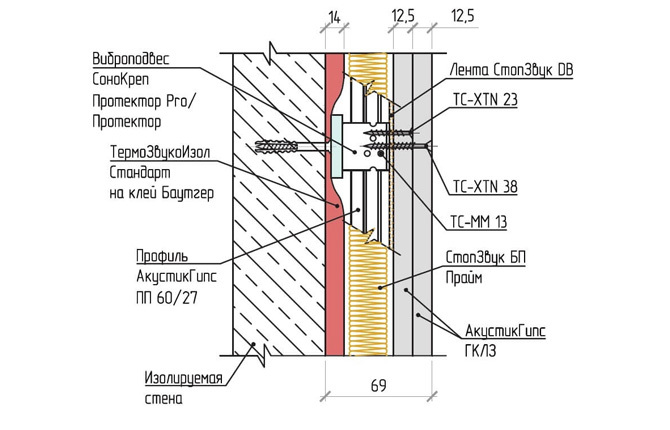
- Multilayer. In such a partition, hard and dense layers alternate with soft and light ones. The former act similarly to single-layer partitions, increasing sound insulation while increasing the density of the material. The latter absorb noise, reducing and attenuating sound vibrations due to air friction in the pores.
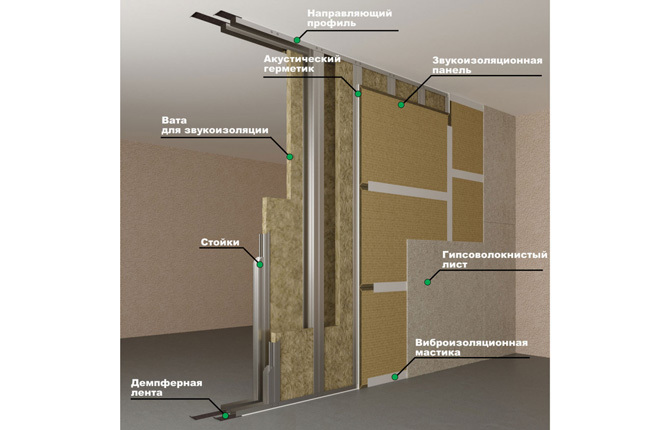
Soundproofing of these types is carried out in different ways. In single-layer, the width of the wall comes to the fore, and in multilayer, the sequence of layers, the correct ratio of density and mass of materials, is important.
Soundproofing materials
For these purposes, different materials are used in construction:
- gypsum;
- isoplays;
- wadded insulation;
- isotex.
Giprok
This is about drywall, which is a gypsum filling wrapped in a layer of construction paper. Today it has become widespread not only in the design of premises, but also in the soundproofing of partitions.
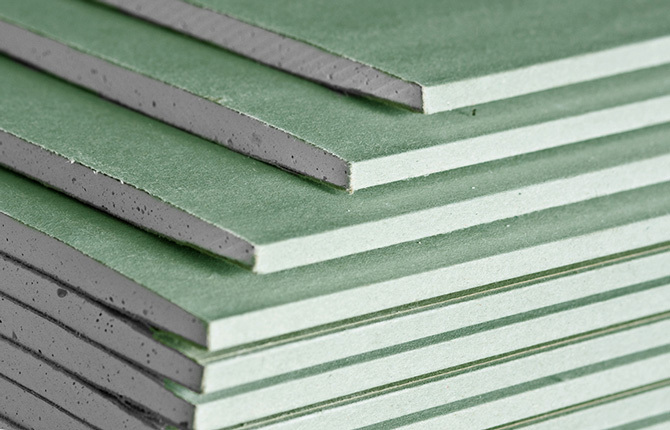
On sale you can find special acoustic drywall with increased noise absorption. It is inexpensive, easy to use, practical. The advantage of the material is that it can be fixed in different ways, for example, on a crate or using plaster mastic.
Partitions with soundproofing made of plasterboard are made as follows: vertical beams are installed in a zigzag pattern, and the space between the sheets is filled with glass wool.
Izoplat
It is a soft fiber board (MFB). It is a material, unique in its properties, with a windproof, heat-insulating, soundproof and vapor-permeable effect.
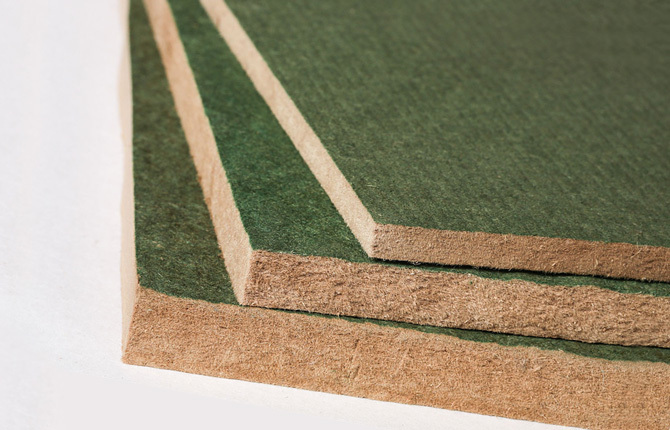
Lignin acts as the main binding element in the slab. In addition to it, artificial latex, bitumen, paraffin may be present in the composition. Isoplat is produced in separate plates with a thickness of 10, 12 and 25 mm, providing sound insulation from 23 dB. They are easy to install, because they can be glued or attached to staples, nails.
Cotton insulation
Mineral wool, linen insulation - all these materials can be used for sound insulation. The porous texture dampens the sound waves inside, preventing them from spreading further.
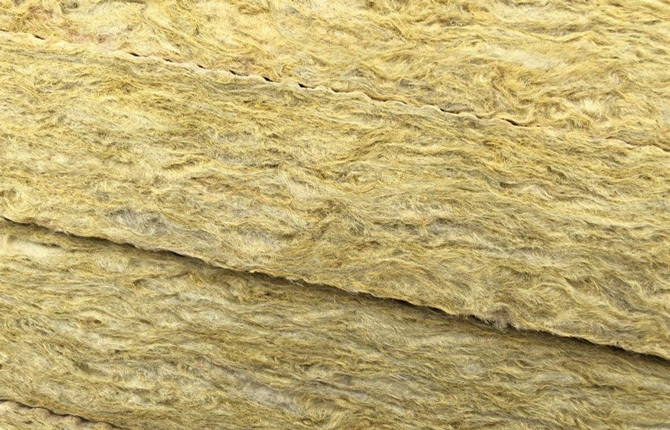
There are several ways to use these materials:
- from the outside of the partition under the cladding;
- installation inside the partition;
- installation in a place where engineering equipment is located - pipes and other structures that create sound vibrations.
Special acoustic wool differs from usual in density. The coefficient of its sound conductivity depends on the thickness of the material.
Isotex
We are talking about ready-made panels that are suitable for soundproofing walls. They can be dyed, covered with fabric, or covered with wallpaper, which opens up a wide range of design possibilities.
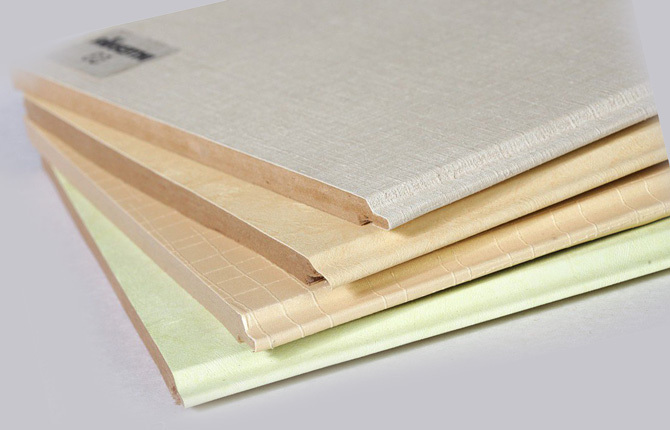
Isotex is made from coniferous trees without harmful impurities and chemicals, therefore the material is considered environmentally friendly, safe for health.
The panels have a small thickness - 12 mm, which is a plus in relation to small rooms, where every centimeter matters. They are attached with glue, self-tapping screws or a construction stapler.
Soundproofing a single-layer partition
A single-layer partition is massive in itself, so for its sound insulation materials are chosen that cannot "eat" a significant area of the room. Thin slabs and panels save space and are therefore preferred.
Two methods of soundproofing partitions have become widespread:
- Isotex.
- Izoplat and isotext.
Option 1 - isotex
If you want not only to protect yourself from the noise coming from outside, but also to adjust the acoustics in the room, for example, in the living room where there is a home theater, then there is no better solution. Isotex panels are thin, but at the same time have a sound insulation coefficient of 23 dB. It is one of the few materials that comes with a decorative finish.
Isotex has another useful property - thermal insulation. It does not allow heat to pass outside, which can reduce losses during the cold season. The panels are delivered in packs of 4, and on a pallet there are 40 packs. One such pallet is enough to finish a 235 m² room.
Option 2 - isoplat and isotex
With such soundproofing of a single-layer partition, isoplat plates are first mounted, and then decorative isotex panels are attached to them. Due to the wide range of sizes of MDVP boards, you can adjust the thickness of the soundproofing layer at your discretion.
These two materials are perfectly combined with each other. The thing is that Isoplat boards have a high absorbing capacity. Ordinary primer is simply absorbed into the surface. Other liquid materials such as paint give the same effect, and isotex panels already have the desired decorative effect and free from the need to perform any additional work.
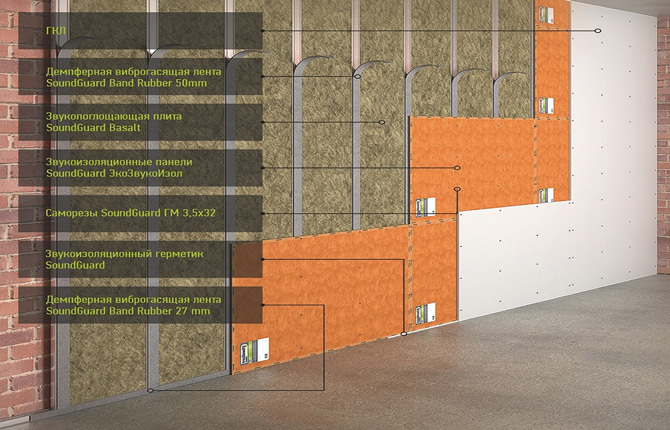
Soundproofing a multi-layer partition
There are many options for making a multi-layer partition. Everything here will depend on the free area of the premises, which the owner is ready to donate, the level of sound insulation that you want to achieve, and material capabilities. The type, thickness of materials, their mass and filling - everything matters.
Three methods of sound insulation have become widespread:
- Adjacency.
- Plate, isoplat and plasterboard.
- Giprok, isoplat and insulation.
Contiguity
With this method of construction, the partition is in contact with other structural elements of the room. Usually this is the floor, ceiling, other walls.
If the interior partition is represented by a gypsum tongue-and-groove plate, then it makes sense to install an elastic abutment between it and the load-bearing wall, which is used as an isoplate plate. It is mounted between gypsum tongue-and-groove plates and the floor, walls and ceiling. Assembly glue is used for fasteners. This option allows you to increase the sound insulation coefficient of the entire structure up to 41 dB.
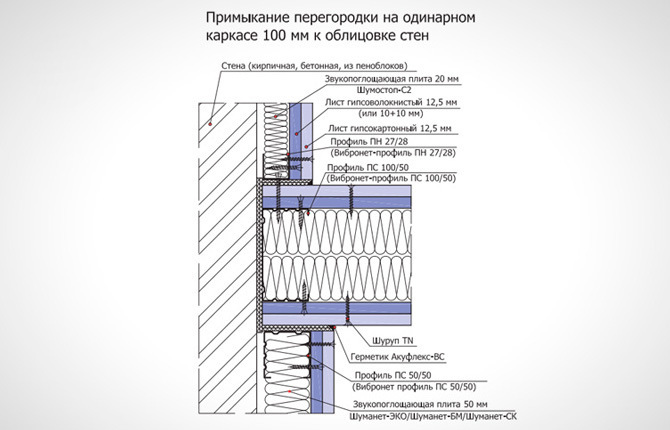
Plate, isoplat and gypsum plasterboard
The tongue-and-groove plate is taken as a basis. It is covered with MDVP plates on both sides, and then drywall is mounted. This method has several advantages at once: plasterboard reflects sound, and isoplat absorbs it.
If you need to increase the sound insulation, you can install several isoplat boards, of course, provided that the area of the room allows. But it is not recommended to increase the number of gypsum boards instead of fiberboard. Hard material will not be as good at dampening sound as soft isoplates.
Giprok, isoplat and insulation
This is the best soundproofing of partitions. To bring the method to life, you must first mount a hollow frame, the space inside which is filled with a soft insulation, for example, cotton wool. Increased requirements are imposed on its naturalness and ability to "breathe", that is, to let air through, otherwise the material will not be able to extinguish the sound qualitatively.
After the frame is closed with isoplat plates, and drywall is attached to them. The result is a lightweight construction with good sound absorption performance.
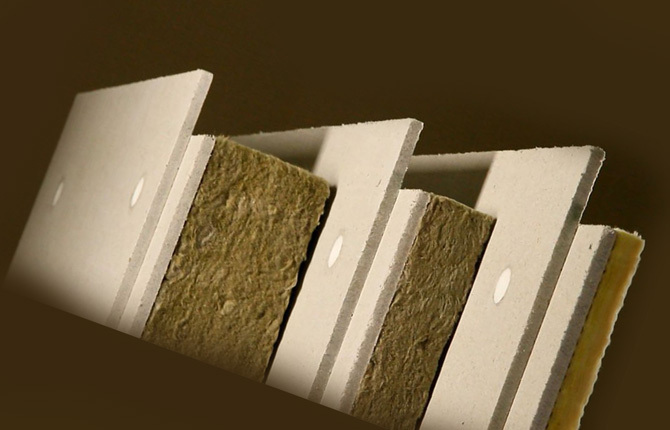
It does not matter whether the soundproofing of wooden partitions or any other is carried out, it is possible to enhance the achieved effect with the help of isotex panels. They can be supplemented with any of the above methods, providing additional acoustic comfort and making the surface decorative. You can even perform soundproofing of partitions in your own house or apartment with your own hands. No special skills are required for this.
Which way did you choose? Share your tips in the comments. Perhaps they will come in handy for someone who is looking for the best and most reliable material for absorbing noise. Bookmark the article and share it on social media.
We also recommend watching a selection of videos that will consolidate your knowledge and answer the remaining questions.
Everything about the soundproofing of the apartment. Installation of interior partitions.
Sound insulation of plasterboard partitions.
Links to sources:
- https://kvartirnyj-remont.com/zvukoizolyaciya-peregorodok.html
- https://www.acoustic.ru/ref_book/articles/zvukoizolyaciya-peregorodki-osnovnie-tipi
